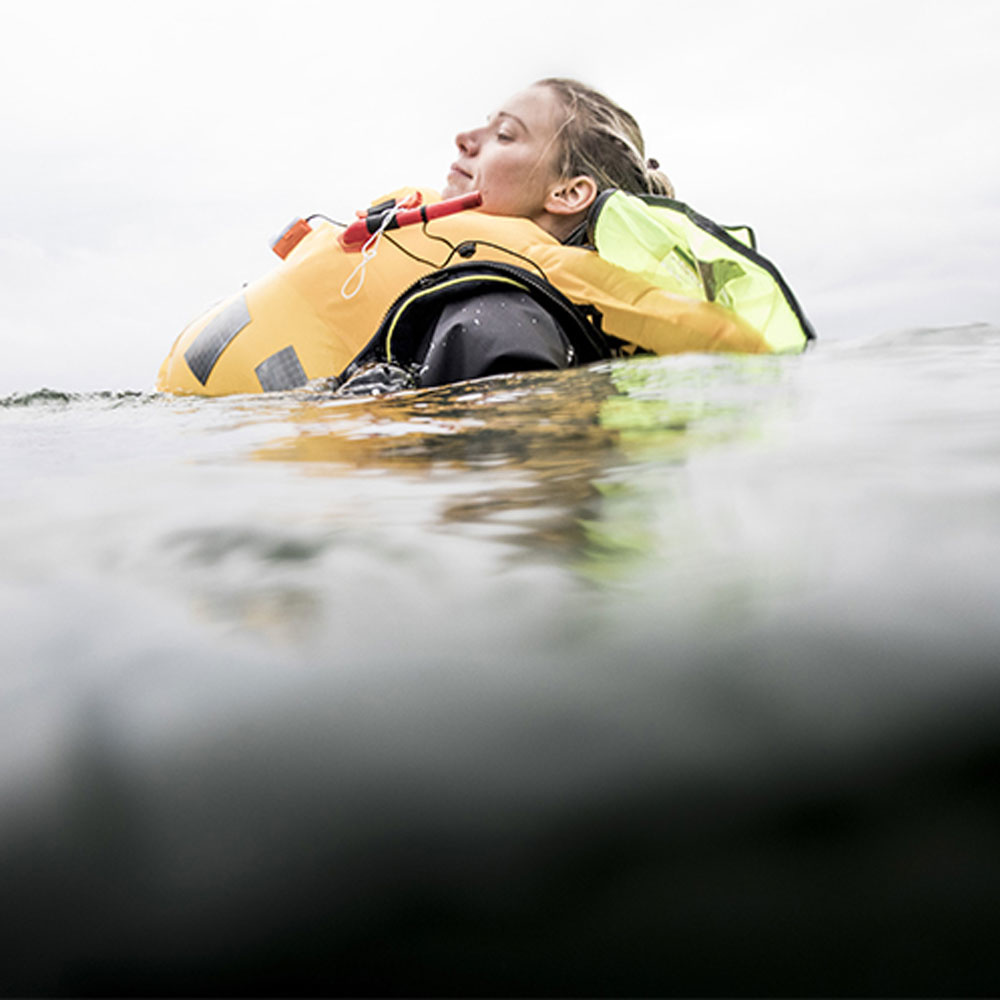Life Jackets v Buoyancy Aids - What's the difference?
Life jackets and buoyancy aids are both designed to serve the same purpose - keep the wearer afloat, but that is where the similarities end. They're two very different pieces of safety equipment that work in very different ways.
Here's a quick comparison:
- A life jacket willkeep your head and face above water even if you're unconscious, a buoyancy aid will not.
- Life jackets use a gas cylinder to keep you afloat, buoyancy aids are cylinder-free and instead use closed cell polyethylene foam to assist you in the water.
- Life jackets are suitable for activities where you're not intending to fall into the water, where-as buoyancy aids are suitable for watersports (such as paddleboarding), where you're likely to all into the water.
Now let's go further into detail.
What is a life jacket?
A life jacket is a personal floatation device that is designed to prevent a casualty from drowning, should they fall into water. A key feature of a life jacket is its ability to turn an unconscious casualty face-up in the water and keep their head and face clear of the water.

Four inflation types are available (automatic, manual, pro sensor and hammar), with automatic life jackets often the most popular, option followed by manual life jackets
and hammar life jackets. An automatic life jacket will automatically inflate when a casualty falls into the water, where-as a manual life jacket will only inflate when the manual toggle is pulled. Hammar and pro sensor life jackets are almost a mid-way point between the two - we go more in depth on this subject in our life jacket inflation guide.
Life jacket bladders are a bright yellow colour in order to make them stand out as much as possible. In addition, many life jacket bladders come equipped with added life jacket accessories such as life jacket lights, to further increase the casualty's visibility in the water.
After a life jacket has been activated, you'll need to replace the cylinder using a life jacket re-arming kit, before it can be used again. This is why buoyancy aids are more suitable for watersports use than life jackets, as you would need to replace the life jacket cylinder every time you fall into the water.
Life jackets also come in a range of different buoyancy options - ranging from 150N junior life jackets, to 300N adult life jackets suitable for the harshest offshore conditions. If you wish to learn more about life jackets, we highly recommend reading our life jacket guide.
What is a buoyancy aid?
Buoyancy aids are far simpler to understand than life jackets. Instead of having a choice of four inflation types, buoyancy aids use closed cell polyethylene foam to assist a user in the water, and there's not a range of buoyancy options - for example, adult buoyancy aids are only designed to meet ISO 12402-5 standards, which is rated at 50 newtons of buoyancy.
As mentioned at the beginning of the blog post, a buoyancy aid will not turn an unconscious casualty over in the water. Buoyancy aids are designed to help the wearer maintain a horizontal position in the water, but they will not keep the wearer's face above water in all situations. As such, buoyancy aids are recommended for use in calmer waters and for activities such as kayaking, canoeing, and stand-up paddleboarding where the risk of falling into deep water is low. As a result, safety brands have designed buoyancy aids targeted at these uses - see kayak buoyancy aids, SUP buoyancy aids and kayak buoyancy aids.
Buoyancy aids are typically made of lightweight materials such as neoprene or nylon, and come in a variety of styles and sizes to fit different body types. They are less bulky and more flexible than life jackets, allowing for greater freedom of movement. Unlike life jackets which come in one size (but do have adjustment points) buoyancy aids come in a range of sizes - so it's worth either trying on a buoyancy aid at a local store, or checking the size chart before making a purchase. A buoyancy aid should fit snug but not too tight, and should allow for full range of motion in the arms and shoulders.
Where can I purchase a personal floatation device?
At Pirates Cave, we supply a leading range of life jackets and buoyancy aids from the industry's most trusted brands. We're sailors and watersports fanatics ourselves, so understand just how paramount it is to wear the right safety equipment out on the water, which is why we only sell personal floatation devices we'd happily wear ourselves out on the water - whether that be a Crewsaver life jacket when enjoying a coastal cruise, or SUP buoyancy aid on a relaxing afternoon paddle boarding.
We wouldn't want anyone to miss out on the fun, which is why we also sell an excellent range of dog life jackets! Dog life jackets work in the same way buoyancy aids do, with the foam construction assisting your dog, should he or she get into difficulty.
Have any questions?
We're here to help! Call us on 01634 295 233, email [email protected], or visit us in-store. We've two locations, a 6,000 square ft Rochester store which is one of the largest chandlery stores in the United Kingdom, and an additional outlet store located within Gillingham Marina.






